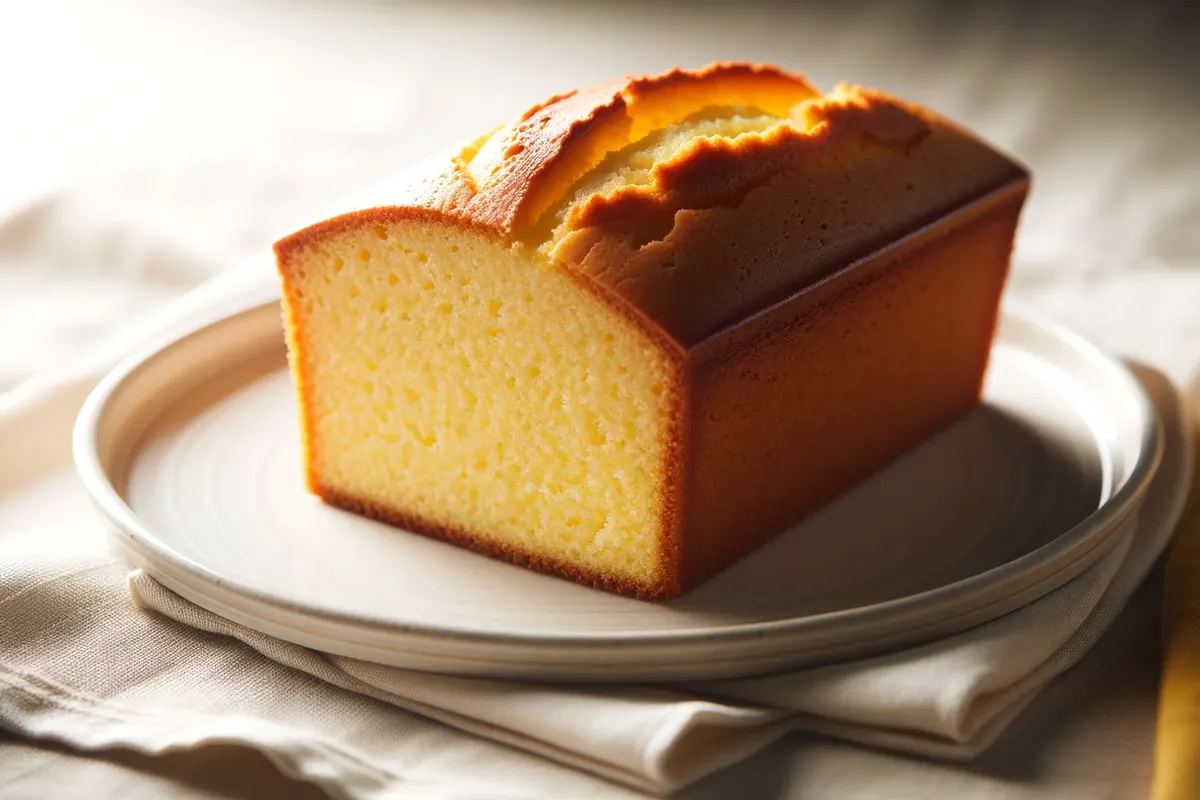Embarking on a culinary journey through the delightful world of pound cake, we uncover the essence of this beloved dessert, cherished for its simplicity and rich history. From its humble beginnings to the myriad of variations it has inspired, the pound cake stands as a testament to the timeless appeal of classic baking. This article slices through the layers of tradition and innovation, presenting a comprehensive guide to mastering the art of pound cake making. Whether you’re a seasoned baker or a curious novice, the following sections will equip you with the knowledge and inspiration to create your own delectable masterpiece.
Introduction to Pound Cake
The Origin and History of Pound Cake
The tale of the pound cake begins in the early 1700s, a simple concoction that epitomized the art of baking with its straightforward formula: a pound each of flour, butter, eggs, and sugar. This balance not only made the recipe easy to remember but also resulted in a cake that was rich and hearty, perfect for a time when measuring tools were scarce. The pound cake’s evolution mirrors the journey of culinary arts, adapting and morphing with each generation to fit new tastes and technologies. From the wood-fired ovens of old to today’s sophisticated kitchen gadgets, the pound cake has stood the test of time, a symbol of comfort and celebration across cultures.
What Makes a Pound Cake Unique?
The hallmark of a pound cake lies in its texture and flavor. Unlike airy sponge cakes or moist layer cakes, a pound cake boasts a dense yet tender crumb, thanks to the generous amounts of butter and eggs. Its crust, often golden and slightly crisp, encases a rich interior that’s both satisfying and versatile. The simplicity of its ingredients allows for a purity of taste that’s hard to find in more elaborate desserts. Yet, the true beauty of pound cake lies in its adaptability. From the addition of citrus zests and spices to the incorporation of various extracts, the basic blueprint of a pound cake invites creativity, making it a canvas for bakers to imprint their personal touch.
How do I keep my pound cake from being dense? Ah, the age-old question that haunts many bakers! The secret lies in the method – the creaming process. Vigorously beating the butter and sugar together until light and fluffy introduces air into the batter, ensuring a finer crumb. Moreover, careful measurement of ingredients and a gentle folding technique can prevent the cake from becoming too heavy.
As we embark on this journey through the layers of pound cake history and character, it’s clear that this dessert is more than just a simple treat. It’s a baking tradition that invites us to mix, pour, and share, connecting us to generations past and future. Stay tuned as we delve deeper into the ingredients, variations, and techniques that make pound cake a beloved staple in the world of desserts.

Ingredients and Variations
Key Ingredients of a Classic Pound Cake
At the heart of every classic pound cake lies a symphony of four fundamental ingredients: butter, sugar, eggs, and flour, embodying the simplicity and sustainability in food choices that organizations like the FAO support. Each component plays a crucial role in crafting the cake’s signature texture and flavor. Butter, rich and creamy, not only contributes to the cake’s luxurious mouthfeel but also carries the flavors of the other ingredients, melding them into a harmonious blend. Sugar does more than sweeten; it aids in the creaming process, helping to whip the batter into a light, airy foundation. Eggs, the binding force, provide structure and stability, ensuring the cake rises to perfection. Lastly, flour, the backbone of the cake, gives it form and substance, creating the classic dense yet tender crumb that pound cake enthusiasts adore.
The Traditional “Pound” Formula
The “pound” in pound cake refers to the equal weights of its four primary ingredients, a formula that has enchanted bakers for centuries with its simplicity and reliability. This balance ensures a cake that’s rich yet not overly heavy, with a fine crumb that’s both satisfying and versatile. It’s a testament to the ingenuity of early bakers, who crafted exquisite desserts with the most basic of measurements.
Common Variations and Modern Twists
While the traditional pound cake is a marvel in its own right, the modern culinary landscape has embraced it as a canvas for creativity. Citrus zest, such as lemon or orange, can infuse the cake with a refreshing brightness, while vanilla or almond extract adds depth and aroma. Adventurous bakers might experiment with spices like cardamom or cinnamon, lending a warm, exotic flair to the classic recipe.
For those with a penchant for texture, incorporating poppy seeds, shredded coconut, or chopped nuts introduces delightful contrasts to the cake’s tender crumb. And let’s not forget the swirls of chocolate, fruit purees, or ribbons of cream cheese that can turn a simple pound cake into a decadent treat. Each variation not only adds a unique twist but also tells a story, reflecting the personal tastes and cultural influences of the baker.
Specialty Ingredients and Their Impact
Flavors and Extracts
In the realm of pound cakes, the subtle art of flavoring can transform the ordinary into the sublime. Extracts, such as vanilla, almond, and lemon, are like the whispers of flavor, hinting at complexity without overwhelming the senses. They meld seamlessly into the batter, elevating the cake’s overall taste profile.
Incorporating Fruits and Nuts
Fruits and nuts offer not just flavor but also texture and color, turning each slice into a mosaic of tastes and hues. Blueberries might burst with tangy sweetness, while pecans add a crunchy contrast to the cake’s buttery softness. These additions are not mere afterthoughts; they are deliberate choices that enhance and complement the foundational flavors of the cake.
Gluten-Free and Vegan Options
Inclusive baking has paved the way for pound cake variations that cater to diverse dietary needs without compromising on taste. Almond flour or a carefully measured gluten-free blend can substitute traditional wheat flour, offering a safe option for those with gluten sensitivities. For the vegan palate, plant-based butters and egg substitutes ensure that the joy of a good pound cake is a universal experience, shared and savored by all.
Through the exploration of ingredients and their myriad variations, the journey of pound cake making becomes a testament to the dynamic interplay between tradition and innovation. Each variation not only honors the past but also invites the future, encouraging bakers to continue this delicious exploration of taste and texture. Stay tuned as we delve deeper into the techniques that elevate a simple batter into a culinary masterpiece.

Baking Techniques and Tips
Mastering the Art of Pound Cake Baking
Diving into the world of pound cake baking is an adventure in precision and patience. The magic lies not just in the ingredients but in how they’re brought together. The process begins with the cornerstone of pound cake perfection: the creaming method. This technique involves beating the butter and sugar until they’re pale, light, and fluffy. This crucial step is not just about mixing; it’s about aerating the batter, which is key to achieving that classic pound cake texture. The air incorporated during creaming expands in the oven, giving the cake its rise.
The Creaming Method Explained
To cream effectively, ensure your butter is at the perfect temperature—soft enough to beat smoothly but not so warm that it’s melting. The sugar then gets beaten into the butter bit by bit, creating a mixture that’s almost white in color and significantly increased in volume. This process requires patience and a keen eye, as over or under-creaming can lead to a cake that’s too dense or too crumbly.
Baking Temperature and Time
Pound cakes are known for their golden crust and tender interior, a balance achieved through precise baking. A moderate oven temperature, typically around 325°F to 350°F (163°C to 177°C), allows the cake to bake evenly, developing a crust that’s just right without drying out the middle. Timing is just as crucial; too little and the center remains underdone, too much and the cake loses its moistness. Each oven is unique, so keep an eye on your cake and test for doneness with a skewer or toothpick—it should come out clean or with a few moist crumbs.
Common Mistakes and How to Avoid Them
Baking a pound cake is like conducting an orchestra; every element must be in harmony. One common pitfall is overmixing the batter once the flour is added. This can activate the gluten in the flour, leading to a cake that’s tough rather than tender. Mix just until the ingredients are incorporated. Another tip is to ensure all ingredients are at room temperature, facilitating a smooth batter and even baking. Lastly, resist the temptation to open the oven door too frequently; the rush of cool air can cause the cake to fall.
Serving and Presentation
Transforming a pound cake from a simple baked good to a show-stopping dessert is all about the finishing touches. The beauty of a pound cake lies in its versatility; it’s a blank canvas waiting for a splash of creativity. Whether you’re serving it at a casual brunch or as the finale to an elegant dinner, the presentation can elevate the humble pound cake into a centerpiece worthy of admiration.
Creative Serving and Presentation Ideas
The classic golden crust of a pound cake provides the perfect backdrop for a range of toppings and accompaniments. A simple dusting of powdered sugar can add a touch of elegance, catching the light and highlighting the cake’s texture. For a bit more flair, a drizzle of glaze—perhaps lemon or vanilla—can add a glossy finish and an extra layer of flavor.
Fruit compotes or fresh berries provide a colorful contrast to the cake’s buttery yellow crumb, introducing tartness and sweetness that complement its rich flavor. For a more decadent approach, a dollop of whipped cream or a scoop of ice cream can turn a slice of pound cake into a sumptuous dessert, perfect for those moments when indulgence is the order of the day.
Glazes, Icings, and Toppings
The options for adorning your pound cake are limited only by your imagination. Glazes, varying from thin and translucent to thick and creamy, can be infused with a myriad of flavors, from classic citrus to exotic spices. Icings, richer and denser than glazes, can add a layer of sweetness that’s visually appealing and delicious.
Toppings like toasted nuts or coconut flakes can introduce a delightful crunch that contrasts the cake’s tender crumb. Even a sprinkle of sea salt can enhance the cake’s flavors, adding a sophisticated edge to a sweet dessert.
Pairing with Beverages and Other Desserts
A well-chosen beverage can complement a pound cake’s flavors and make for a more enjoyable eating experience. A cup of coffee or tea can balance the sweetness of the cake, while a glass of milk can enhance its comforting, homey feel. For a more festive occasion, a sparkling cider or a non-alcoholic fruit spritzer can add a celebratory note.
In terms of dessert pairings, a slice of pound cake can be a great addition to a dessert platter, offering a contrast in texture and flavor to other sweets. It can also serve as a base for more elaborate desserts, like trifles or parfaits, layered with fruit, custard, or jelly.
The art of serving and presenting a pound cake is about enhancing and complementing its inherent qualities. With a bit of creativity and attention to detail, you can transform this classic dessert into an unforgettable part of any meal or occasion. As we continue our journey through the world of pound cakes, remember that the true beauty of this dessert lies in its simplicity and the joy it brings to those who share in its flavors.
Cultural Significance and Stories
The humble pound cake carries with it a tapestry of cultural significance and stories, making it much more than just a dessert. This simple cake, with its rich history, has woven itself into the fabric of many traditions and celebrations around the world. It serves as a symbol of hospitality, a staple of holiday tables, and a cherished recipe passed down through generations.
The Cultural Significance of Pound Cake
In many cultures, the pound cake is a symbol of warmth and welcome. Its simple, hearty ingredients and satisfying texture make it an ideal offering to guests, embodying the spirit of sharing and community. In the Southern United States, for example, the pound cake holds a place of honor at gatherings, often prepared with a secret family recipe that’s a source of pride and tradition.
The cake’s versatility means it can be adapted to fit various cultural preferences and seasonal ingredients, making it a global favorite. From the lemon-scented pound cakes of summer picnics to the rich, spice-laden versions enjoyed in the colder months, this cake celebrates the diversity of flavors and traditions around the world.
Pound Cake in Family Traditions and Celebrations
For many, the pound cake is more than just a dessert; it’s a vessel for memories and a link to the past. Baking a family’s signature pound cake for special occasions is a cherished ritual, with recipes often treated as treasured heirlooms. The act of baking and sharing a pound cake can evoke memories of loved ones and shared experiences, making it a poignant reminder of family history and connections.
In celebrations, the pound cake often takes center stage, be it at birthdays, weddings, or holiday feasts. Its simplicity allows it to be dressed up or down, fitting seamlessly into any occasion. The cake’s sturdy structure makes it an excellent base for elaborate decorations or a simple, elegant centerpiece on its own.

Notable Pound Cake Recipes from Around the World
As the pound cake has traveled the globe, it has been embraced and adapted by various cultures, each adding its unique twist. In France, the quatre-quarts cake mirrors the pound cake’s equal parts principle, while in Latin America, variations might include tropical flavors like coconut or lime.
In Germany, the Eischwerteig with its rich, buttery texture, shares similarities with the classic pound cake but often includes a hint of lemon zest or a splash of rum for added depth. Meanwhile, in Italy, the pan di Spagna offers a lighter take, with its airy texture and fine crumb.
Each of these variations tells a story, whether it’s of local ingredients, traditional techniques, or personal memories. The pound cake, in its many forms, serves as a delicious testament to the power of food to bring people together, transcending cultural and geographical boundaries.
Through its cultural significance and the stories it carries, the pound cake offers a window into the shared human experience of cooking and eating. It reminds us that food is not just sustenance but a language of its own, capable of conveying history, tradition, and love. As we continue to explore the world of pound cakes, let’s celebrate not only the flavors and techniques that make each cake unique but also the stories and traditions that give them meaning.
FAQs
Pound cake, with its rich history and simple elegance, often brings up questions from both novice and experienced bakers alike. Addressing these frequently asked questions can shed light on common curiosities and challenges, making the baking process more enjoyable and successful.
Can I Use Different Types of Flour in My Pound Cake?
Absolutely! While all-purpose flour is commonly used, trying out different flours can bring interesting textures and flavors to your pound cake. Cake flour, for instance, has a lower protein content, yielding a finer, softer crumb. For a nuttier, more wholesome flavor, incorporating a portion of whole wheat flour can add depth. However, it’s crucial to adjust your recipe as these flours have different absorption rates and gluten contents.
How Do I Keep My Pound Cake from Being Dense?
A dense pound cake often results from overmixing or incorrect measuring. To ensure a lighter crumb, focus on properly creaming your butter and sugar until light and fluffy. This incorporates air into your batter, acting as a leavening agent during baking. Additionally, sift your flour and fold it gently into the batter to avoid overworking the gluten. Precise measuring is key—using a kitchen scale can yield more consistent results than measuring cups.
Why Did My Pound Cake Crack on Top?
A crack on the top of a pound cake is quite common and can result from a few factors. One reason is the oven temperature; too hot an oven can cause the outside of the cake to bake and set too quickly, while the inside continues to rise, leading to a crack. Another possibility is overfilling the pan, which doesn’t leave enough space for the cake to expand evenly. While a crack doesn’t affect the taste, ensuring the correct oven temperature and filling the pan two-thirds full can minimize this issue.
Can I Add Fresh Fruits to My Pound Cake?
Incorporating fresh fruits into your pound cake can add a delightful burst of flavor and moisture. Berries, diced apples, and peaches are popular choices. To prevent the fruit from sinking to the bottom, lightly coat your fruit in flour before folding it into the batter. Be mindful of the added moisture from the fruit; you may need to adjust the baking time slightly.
How Long Can I Store Pound Cake, and How?
Pound cake stores remarkably well, thanks to its high butter content. Wrapped tightly in plastic wrap or stored in an airtight container, it can last up to five days at room temperature. For longer storage, you can freeze the cake for up to three months. When ready to serve, allow it to thaw gradually at room temperature to preserve its texture and flavor.
Addressing these FAQs not only helps in troubleshooting common baking challenges but also empowers bakers to experiment with confidence. Each pound cake is an opportunity to blend tradition with personal flair, resulting in a dessert that’s as unique as its creator.

